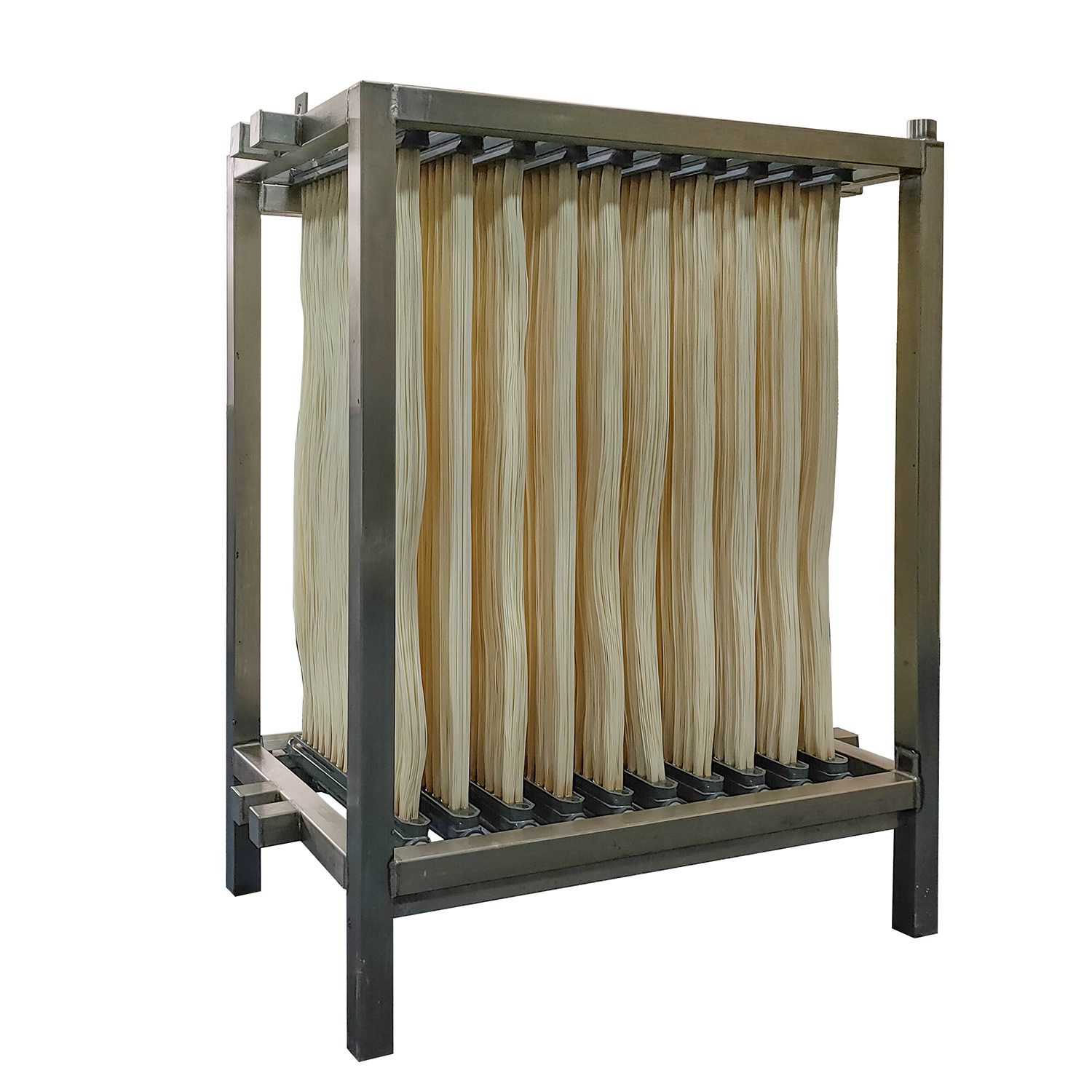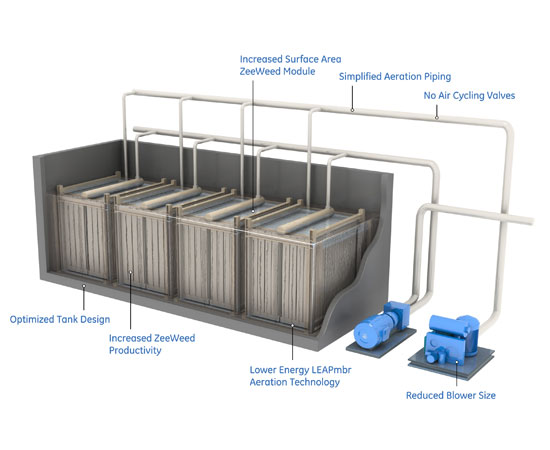Future Trends in Membrane Bioreactor Technology and Its Global Impact
Future Trends in Membrane Bioreactor Technology and Its Global Impact
Blog Article
The Advantages of Membrane Bioreactors in Lasting Wastewater Monitoring
Membrane bioreactors (MBRs) represent an essential improvement in sustainable wastewater monitoring, successfully combining biological therapy with advanced membrane layer filtration modern technology. This integration not only boosts effluent top quality by efficiently eliminating pollutants however also opens up opportunities for water reuse in various applications, thus resolving the pushing requirement for source conservation. The small design of MBRs adds to significant decreases in ecological effect and operational prices. As the demand for sustainable remedies magnifies, checking out the complex advantages of MBRs may expose unforeseen ramifications for the future of wastewater treatment systems.
Overview of Membrane Bioreactors
Membrane layer bioreactors (MBRs) stand for a significant development in wastewater therapy innovation, integrating biological degradation with membrane layer purification to improve the efficiency of the treatment procedure. This ingenious system integrates the benefits of standard activated sludge processes with membrane technology, permitting for enhanced solid-liquid separation. MBRs make use of semi-permeable membrane layers to different cured water from biomass, leading to top quality effluent that can be recycled or securely released right into the environment.
The operational design of MBRs commonly involves a bioreactor where bacteria damage down organic issue, complied with by a membrane system that filters the combined alcohol. This configuration not just reduces the impact of the therapy center yet likewise permits higher biomass concentrations and lowered hydraulic retention times. Moreover, MBRs are qualified of dealing with a bigger series of impurities, including pathogens and nutrients, making them ideal for numerous applications, from community wastewater therapy to industrial effluent processing.
The integration of MBRs right into wastewater management systems is indicative of a growing fad towards sustainable and effective methods in environmental design. Their capacity to create top quality effluent while lessening space needs positions MBR technology as a key player in modern-day wastewater treatment solutions.
Boosted Effluent Top Quality

The membrane filtration process serves as a physical barrier, allowing the retention of bacteria and particulate matter, which adds to a more clear and cleaner effluent (Membrane Bioreactor). In addition, MBRs operate at higher biomass focus than conventional activated sludge systems, promoting more reliable biodegradation of contaminants. This results in a decrease in biochemical oxygen need (BOD) and overall put on hold solids (TSS) levels in the final effluent
In addition, MBRs show exceptional performance in dealing with difficult wastewater make-ups, such as industrial effluents and wastewater with high nutrient loads. Because of this, the effluent created is typically of higher quality, permitting even more versatile disposal alternatives and decreased environmental impact. Eventually, the enhanced effluent high quality achieved with MBR technology underscores its crucial function ahead of time lasting wastewater management you could try these out methods.
Water Reuse Opportunities
The premium effluent created by membrane bioreactors (MBRs) opens up substantial chances for water reuse in various applications. MBRs successfully eliminate impurities, consisting of microorganisms, suspended solids, and organic issue, causing treated water that satisfies or surpasses regulatory requirements for reuse. This quality permits for the application of water recycling campaigns across diverse markets.
One famous application remains in farming, where dealt with wastewater can be made use of for irrigation, advertising sustainable farming methods while preserving fresh water resources. In addition, MBR-treated effluent can be made use of for commercial procedures such as air conditioning, cleansing, and as a process water source, substantially reducing the demand for drinkable water in these procedures.
In urban atmospheres, MBRs promote using redeemed water for landscape irrigation, commode flushing, and other non-potable usages, contributing to the overall resilience of water supply systems. Moreover, the assimilation of MBR innovation in decentralized systems aids in taking care of localized water demands, especially in water-scarce areas.
Lowered Ecological Influence
Just how can the fostering of membrane bioreactors (MBRs) contribute to a minimized environmental impact in wastewater management? MBRs dramatically improve the treatment effectiveness of wastewater while lessening environmental disturbances. Membrane Bioreactor.
Moreover, MBRs run at lower hydraulic retention times compared to conventional systems, causing smaller sized treatment plant impacts. This small design minimizes land use, consequently protecting natural habitats and biodiversity. The process additionally produces much less sludge than traditional techniques, mitigating disposal obstacles and decreasing greenhouse gas emissions connected with sludge monitoring.
In addition, MBRs help with the recovery of useful resources, such as water and nutrients, adding to a circular economic climate. By enabling water reuse for watering or commercial procedures, MBRs help alleviate freshwater shortage, hence advertising lasting water make use of methods. Ultimately, the adoption of MBR modern technology represents a substantial stride towards lessening the ecological impact of wastewater monitoring systems.
Financial Benefits of MBRs

Furthermore, MBRs promote the manufacturing of premium effluent, which can be recycled for various applications, such as farming watering and industrial use this link procedures - Membrane Bioreactor. This reuse ability can dramatically reduce water procurement prices, providing an economic reward for markets encountering rigid water guidelines
The compact design of MBR systems likewise results in reduced land requirements, which is particularly valuable in metropolitan locations where realty is costly. By lessening area, industries and communities can reduce land acquisition and maintenance expenditures.
Additionally, MBRs typically require less regular maintenance and have a longer life expectancy than standard systems, better contributing to cost financial savings. In recap, the economic benefits of MBRs-- varying from reduced functional expenses to land financial savings and effluent reuse-- make them a compelling selection for lasting wastewater administration, offering both lasting and prompt monetary benefits.
Verdict
Membrane layer bioreactors stand for a transformative method to lasting wastewater management, useful link integrating organic treatment with innovative membrane layer filtering for remarkable effluent top quality. Their capacity for effective pollutant removal helps with water reuse, therefore saving vital freshwater resources. In addition, MBRs contribute to lowered environmental influences via portable layouts and lower sludge generation. Economic advantages additionally boost their practicality, making MBRs an appealing remedy for resolving the difficulties of wastewater treatment and advertising sustainable resource monitoring.
Membrane bioreactors (MBRs) stand for an essential development in lasting wastewater monitoring, properly combining organic therapy with advanced membrane layer filtration modern technology.Membrane bioreactors (MBRs) represent a substantial advancement in wastewater treatment innovation, incorporating biological destruction with membrane filtration to boost the efficiency of the therapy process.Achieving improved effluent top quality is one of the most significant advantages of making use of membrane layer bioreactors (MBRs) in wastewater therapy.Additionally, MBRs show outstanding efficiency in dealing with difficult wastewater make-ups, such as industrial effluents and wastewater with high nutrient lots.Integrating membrane layer bioreactors (MBRs) right into wastewater monitoring not only reduces ecological influence however also offers substantial financial benefits.
Report this page